Premier League
Robots are coming for all of our sports – the only question is when

After he slalomed between two defenders and one-timed a bouncing stretch pass to the inside corner of the left post, Peter Stone turned toward a teammate, smiled, and celebrated the dazzling sequence with a shrug.
Stone’s showing on an indoor soccer pitch in Sydney, Australia, earlier this summer was dominant by any standard, even though the specifics of the match were unconventional. Outfitted in dress shirts, he and four fellow scientists were coasting past a team of wheeled robots, exploiting holes in their defense with shrewd link-up play and timely saunters down the wing.
Even as he scored four goals in the 4-1 win, Stone – the president of the RoboCup Federation, an international collective of academics that arranges this yearly tussle between man and machine – came away impressed by his opponents’ teamwork and smarts. The patterns in which the robots shared possession and moved into open spaces were familiar; they resembled the kinds of decisions that underlie any cohesive lineup’s attack.
The robots, standing just waist-high against the humans, managed to make this much clear: They knew what they were doing.
“People are still much better than the robots. We can still pass the ball around them,” said Stone, an artificial-intelligence researcher at the University of Texas. “(But) every year, it gets a little bit more difficult. We always joke that we’re not sure if it’s because we’re getting older or the robots are getting better.”
RoboCup is a scientific entity. It stages soccer tournaments between teams of robots because its members, first and foremost, want to advance the state of robotics research. However, the goal around which the federation orients its work is rooted in sports. By 2050, the scientists want to build a roster of autonomous humanoids that is capable of competing against the most formidable opponent imaginable: the champion of that year’s World Cup.
The 2050 benchmark is an objective, but not a prediction. “We learned long ago in artificial intelligence that if you put a date on a challenge like that, you should do it for a date after you’re going to retire, because they’re very uncertain,” Stone said.
Still, there’s no time like the present to wonder when this ambition might be realized – and, once it is, how it will affect each and every one of our games.
In 2019, the makings of a future in which humanoids displace professional athletes and technology renders both coaches and referees obsolete is starting to become discernible. Toyota engineers have developed a stationary basketball robot that sinks set shots with unrivaled accuracy. And not long after he departed Arsenal last year, Arsene Wenger speculated that robots could manage soccer clubs within two decades.
Radar technology is already responsible for calling balls and strikes in the independent Atlantic baseball league, which MLB tapped as its testing ground for a slate of experimental rules. Human umpires still relay the calls to the players and the crowd, but their deference to the automated system means that for the first time, a non-human entity occupies a full-time role in a live sports competition.
“(Players) want to have a consistent strike zone,” Atlantic League president Rick White said. “They have consistently in the past said to us, ‘Tell us what the strike zone is, enforce the strike zone, but don’t change that umpire to umpire, day to day, inning by inning,’ and so forth. (The automated system) gives them an answer to that.”

Given the novelty of the Atlantic League’s trial run, we’re a ways off from MLB deciding to computerize its own strike zone. Even further away is the prospect of a robot keeping pace with Kylian Mbappe or outshooting Stephen Curry against the added burden of a defender. Present-day humanoids generally struggle to stand upright, which is why it’s far more entertaining for RoboCup to pit wheeled competitors against Stone and his colleagues at the federation’s annual gathering.
Those RoboCup competitions, which are broken down into several divisions based on the robots’ design, illustrate the core challenge of taking aim at the World Cup champs: Robot athletes must be hardwired to not only think like humans, but to move like them, too.
For now, robots are significantly more intelligent than they are mobile. When Stone’s team faced the winners of RoboCup’s wheeled “middle size” league, which factors physicality out of the equation, the robots scored their lone goal off a perceptive downfield pass from a defender to a striker.
A second robot goal was nullified, somewhat ironically, when replay overruled a human decision because the ball didn’t fully cross the line.
Meanwhile, RoboCup’s humanoid event brings to life an old soccer witticism – the one about possession-happy teams preferring to walk the ball into the net. It’s the surest way to score in a game where the players, limited in their ability to move freely, lumber down the pitch with a minder in tow, kicking only from a standstill to avoid falling over.
The chasm between the humanoid body and mind helps explain the value that researchers see in RoboCup and other similar projects. If the end goal is scientific progress, then sports – with their quantifiable standards of success – are a useful setting through which to pursue that result, and to test boundaries.
Each year, the Federation of International Robot-Sport Association (FIRA) invites roboticists to enter humanoids they’ve developed into the HuroCup – the decathlon of the robot world. In the sprint event, participants are made to walk 3 meters forward and then backpedal the same distance. They also weight lift, scale ladders and ropes in a spartan race, and compete in a marathon that spans 421.95 meters, one hundred times smaller than a human course.
One event in which humanoids could threaten human preeminence rather soon is archery. Jacky Baltes, the president of FIRA and a robotics researcher at National Taiwan Normal University, said that he and several colleagues from around the world are working to enter a robot archer into next year’s Taiwanese national competition in hopes that it will later be able to vie for medals at the World University Games, and then at the Olympics.
In contests that require agility and speed, Baltes thinks robots are bound to make exponential strides, similar to other seminal technologies that took time to flourish. He pointed to cellphones, which were once stodgy and heavy but are now small supercomputers. A more extreme example? In 1903, Orville and Wilbur Wright kept a plane aloft for 260 meters of flight; by 1947, aviation had progressed to the point where test pilot Chuck Yeager could soar faster than the speed of sound.
We might be 40 years out from a humanoid topping a child in a race of any length, Baltes added, but once the basic framework is in place, it’s possible no man-made record will be safe.
“From beating a 5-year-old to beating the world champion is only going to be a relatively short time,” Baltes said. “Maybe another five years, maybe another 10 years.”

Whenever that time comes, British futurist Ian Pearson figures fans won’t take much of an interest in watching those humanoids make precision sports, such as archery and shooting, entirely predictable. “Of course a machine can hit the target,” he said.
Pearson applies the same logic to golf. It would be dull, after all, if every round consisted of 18 holes-in-one.
Other sports have greater crossover potential. Robot jockeys could supplant the human element in horse racing, allowing the Triple Crown to be decided solely on the horses’ merits. Pearson says he’d be surprised if the next 20 years elapsed without humanoids facing tennis pros in showcase matches. (He noted that this brand of exhibition could be short-lived if the robots reach superhuman physical capacity, enabling them to win all the time.)
As for the people tasked with enforcing the rules? The advent of automated home plate umpires in baseball might be a harbinger of what’s to come elsewhere. Pearson has written that robot umps could be practical in tennis, where technology has already replaced humans in calling net cords, and Hawk-Eye is used as a backup resource for line calls. He predicted that drone robots could feasibly take over all officiating duties in soccer by as soon as next year, with humanoid referees to follow around 2030.
If that prognosis seems grim for human officiating, it at least comes equipped with a silver lining: the chance that spectators will revolt at the sight of robots getting every single call correct. “Half of the fun of watching a game is arguing with the referee and calling the guy an idiot,” Pearson said.
When the robo-athlete breakthrough arrives, many executives who oversee sports will face a moment of reckoning. How will they act in response?
One option would be to bar robots from our established competitions, which is where Baltes’ effort to get a humanoid archer admitted to the Olympics may hit a snag. A spokesperson for World Archery, the sport’s governing body, said the federation’s rulebook doesn’t specify that archers must be human, but does include many prohibitions on the use of electronic equipment.
“I would guess this covers robots,” the spokesperson, Chris Wells, wrote in an email.

In the opposite scenario, if marketing potential or the desire to innovate leads sports authorities to welcome robots into the fold, limits on their physical capabilities would have to be enacted to prevent them from making a mockery of the games. Disregard, for a moment, the image of primitive humanoids tottering down a soccer pitch; envision in its place a descendant that’s programmed to run with abandon and kick a ball several hundred miles per hour.
“You wouldn’t be able to follow the play,” Pearson said. “Every shot would be a goal, and it just wouldn’t be fun watching it.”
About a decade ago, this dilemma led Stone and two fellow roboticists to propose, in a chapter of a book called “Soccer and Philosophy,” a set of robot-curtailing rule modifications that would ensure fairness and preserve the essence of the sport, which they described as two teams working to beat each other within the confines of limitations that every player on the field shares.
Their suggested rules stipulate that robot soccer players would need to look like humans, with two arms, two legs, and no more than two forward-facing cameras to serve as their eyes. No robot could be bigger than the biggest human player; none could run faster or kick harder than the upper human limit in each category. Nor could any robo-team’s combined size, speed, and kick strength and accuracy exceed the best pro team’s total dispersion of those qualities.
“If there comes a time when a team of robots defeats a team of humans under these rules, then no spectator will be able to cry ‘foul!'” Stone and his colleagues, Michael Quinlan and Todd Hester, wrote in the chapter.

No spectator, that is, except for those who’d protest the validity of the result on philosophical grounds. When a robot athlete engages in a sport such as soccer, these fans might wonder if they’re truly playing the game, or if they’re merely mimicking a necessarily human activity.
Stone, Quinlan, and Hester sided with the first response to this question. In their chapter, they argued that if a match in which robots oppose a “serious human team” – be it the World Cup champion or five decently fit scientists – is recognizable as soccer, the robots have sufficiently proven their ability to play.
In 2016, sports philosophers Francisco Javier Lopez Frias and Jose Luis Perez Trivino advocated for a more rigorous standard, opining, in a paper, that participating in a sport is not the same as playing it. In sports, they contend, people – unlike any other being – decide to enter the realm of play to learn something about themselves, such as seeing how close they can get, within natural limits, to attaining physical excellence.
“It’s not just about following the rules. It’s not about exercising some skills,” Lopez Frias said in an interview. “(Playing sports is) about adopting a specific attitude toward the game.”
For robots to play sports, Lopez Frias added, more about them would need to be human than simply their outward appearance. If they don’t share human vulnerabilities, fans won’t be able to relate to them, or admire or care about the wondrousness of any physical feats they conjure.
Future robots may beat us on the scoreboard, or ensure that no pitch off the plate is ever mistaken for a strike again. But under this line of thinking, we’d still be the protagonists of our own games.
“Sport is a human phenomenon,” Lopez Frias said. “If you eliminate the human component, then you don’t have a sport anymore.”
– With a file from Jonah Birenbaum
Nick Faris is a features writer at theScore.
Copyright © 2019 Score Media Ventures Inc. All rights reserved. Certain content reproduced under license.
You may like
Premier League
Breaking down thrilling EPL title race with 10 games left
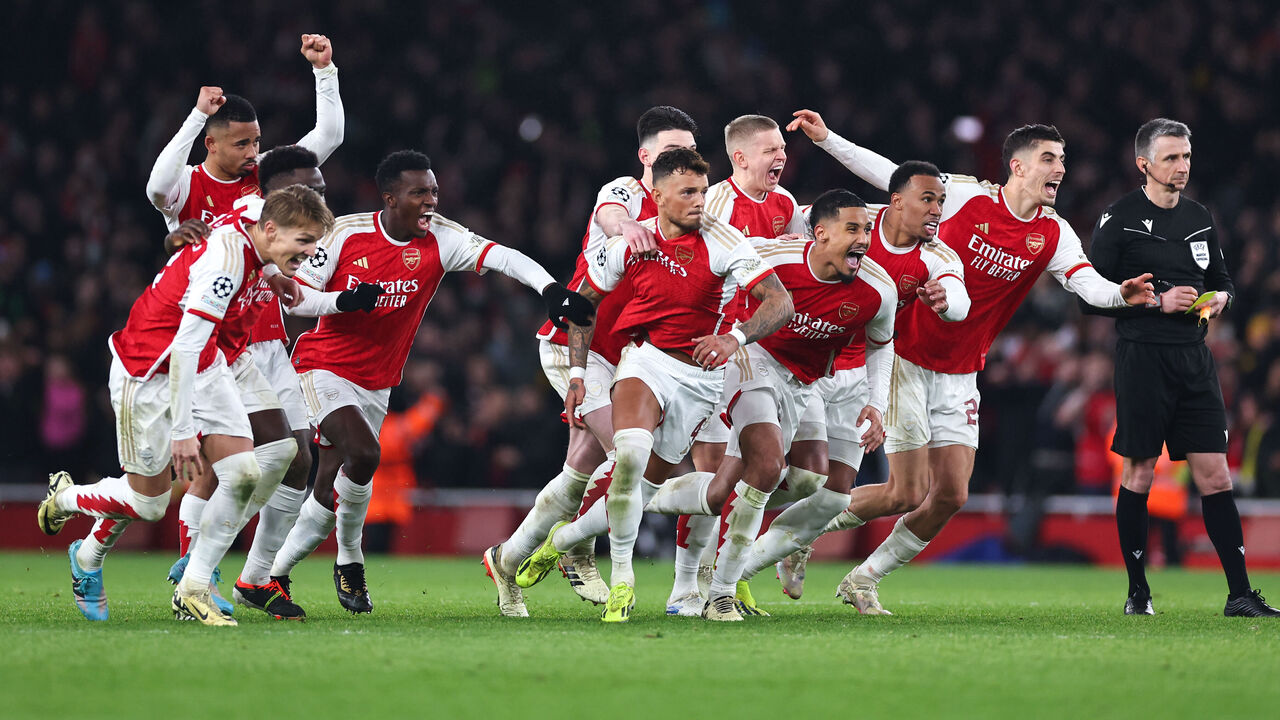
Find the biggest stories from across the soccer world by visiting our Top Soccer News section and subscribing to push notifications.
One of the most intoxicating title races in Premier League history is, mercifully, ready to resume.
The quirks of the calendar – an FA Cup weekend succeeded by an agonizing international window – means the titanic tussle between Arsenal, Liverpool, and Manchester City will have been on hiatus for a full three weeks before it gets back underway on Sunday.
But there are no more impending interruptions. With 10 matches remaining for each title contender, we’re barreling toward a resolution to the type of three-way battle that’s exceedingly rare in England’s top flight. There’s never been a season in the Premier League era where three teams went into the final day with a chance to hoist the trophy. This could be it. The last time it happened was the 1971-72 campaign, when Derby County won an incredible four-team fight, narrowly beating Leeds United and, ominously, Liverpool and Man City to the crown. We’re overdue for that kind of drama.
That three sides have converged this way at all is, frankly, remarkable.
These are the three best teams in the country by an enormous margin. They’re the only ones with an expected goal difference per game of plus-1.0 or greater this season. The next best mark, surprisingly, belongs to Mauricio Pochettino’s erratic Chelsea team at plus-0.36. So, yeah, it’s not close.
The three of them are also on a tear and show no signs of slowing down. Arsenal have won all eight of their league games in 2024, scoring 33 goals in the process; Liverpool have collected 22 of a possible 27 points in that time; reigning champions Manchester City have racked up 23 of 27 points. They’ve combined for just one loss since the calendar flipped – Liverpool’s 3-1 defeat against Arsenal in early February.
The only sides that look capable of halting their progress are each other, which makes this weekend’s clash between Manchester City and Arsenal at the Etihad all the more significant.
Each contender has a compelling reason for believing it’s “their” year.
Arsenal
Mikel Arteta’s men look far more assured and mature than last season when they set the pace for nearly the entire campaign, only to crumble down the stretch and relinquish their once sizeable advantage to Manchester City. Do-it-all superstar Declan Rice has been a transformative figure in midfield, while Kai Havertz, after an inauspicious start, is becoming an increasingly vital and consistent scoring threat. At least from the outside, there appears to be more self-belief within the Arsenal camp. Having learned from their experience in 2022-23, Arsenal won’t cede top spot so easily this time. It’ll need to be ripped from them.
Some may be inclined to dismiss their recent run because of their opponents. Yes, the Gunners have played some weak teams – Sheffield United! Burnley! Nottingham Forest! – but, for the most part, they aren’t just beating them; they’re blowing them away with a ruthlessness usually associated with title winners. For those still unconvinced, Sunday’s visit to the Etihad, where they were tossed aside like a rag doll in last season’s 4-1 loss, will be the ultimate litmus test to see if this team is ready to end the club’s 20-year title drought.
Liverpool
Jurgen Klopp’s persistent squad, already with the League Cup in tow, aims to send off their departing bench boss in style. Liverpool have been the most entertaining team of the trio this season. They create more chances than Arsenal and City and concede more opportunities. Darwin Nunez, the ultimate agent of chaos on a football pitch, is the perfect fit for a team with a habit of scoring late goals and delivering dramatic moments. Their title charge is built on more than just vibes, though.
Liverpool overwhelmed none other than City in their last league game before the international break but came away from the pulsating affair at Anfield with a 1-1 draw. City, usually self-confident and domineering in possession, simply held on against what Pep Guardiola dubbed a “tsunami” of pressure. There was obviously some added incentive at play, but Liverpool are built to go full speed regardless of the opposition. It’s in their nature under Klopp.
Manchester City
Despite not being at its vintage best this term, Guardiola’s accomplished crew remains the favorite in the eyes of many who, for good reason, simply refuse to pick against them. We’ve been conditioned to feel like City will inevitably be the last team standing because, well, they usually are. Five titles in the previous six seasons will have that effect on the collective psyche. However, Erling Haaland isn’t replicating his ferocious scoring pace from last season, and Kevin De Bruyne has been limited to six league starts. Also, outside of some electrifying Jeremy Doku performances, the summer signings haven’t exactly set the world alight. And yet, here they are, just one point off the top, showing the quiet confidence and tranquility that can only be obtained through winning experiences.
With Phil Foden leading the way and authoring arguably the best season of anyone in the league, City could become the first team in English history to win four consecutive top-flight titles.
Strength of schedule
On paper, Arsenal have the most difficult fixture list.
Their remaining opponents average 41.8 points this season, roughly corresponding to ninth place in the table. Put another way, it would be the equivalent of playing Wolves (41 points) or Brighton (42) each week. It doesn’t help that many of Arsenal’s toughest matches are away from home. Coincidentally, they have upcoming trips to Brighton and Wolves, along with north London rivals Tottenham and Manchester United, following this weekend’s potentially decisive tilt at the Etihad. It’s tough.
Manchester City’s task is slightly more forgiving, as their remaining opponents average 40.7 points or 10th place.
Liverpool appear to have the most favorable schedule of the trophy chasers, with their opponents averaging 38.4 points, a tally representing the haul of a team in the bottom half of the table. While that’s better than the alternative, it’s not quite so simple for the Reds. On the back of a potentially draining Europa League quarterfinal second leg against Atalanta in mid-April – more on that soon – Klopp’s men have three away games in seven days against Fulham, Everton, and West Ham. In addition to battling their local nemesis, who could still be scrapping for survival at that point, Liverpool will also face a rambunctious Goodison crowd that would love nothing more than to play a critical role in stopping their hated rivals from winning another league crown.
Aston Villa and Spurs, meanwhile, stand out as common foes for all three title hopefuls. Sitting fourth and fifth, respectively, and engaged in their own fight to secure a Champions League place, they could play the role of kingmakers this spring.
European commitments
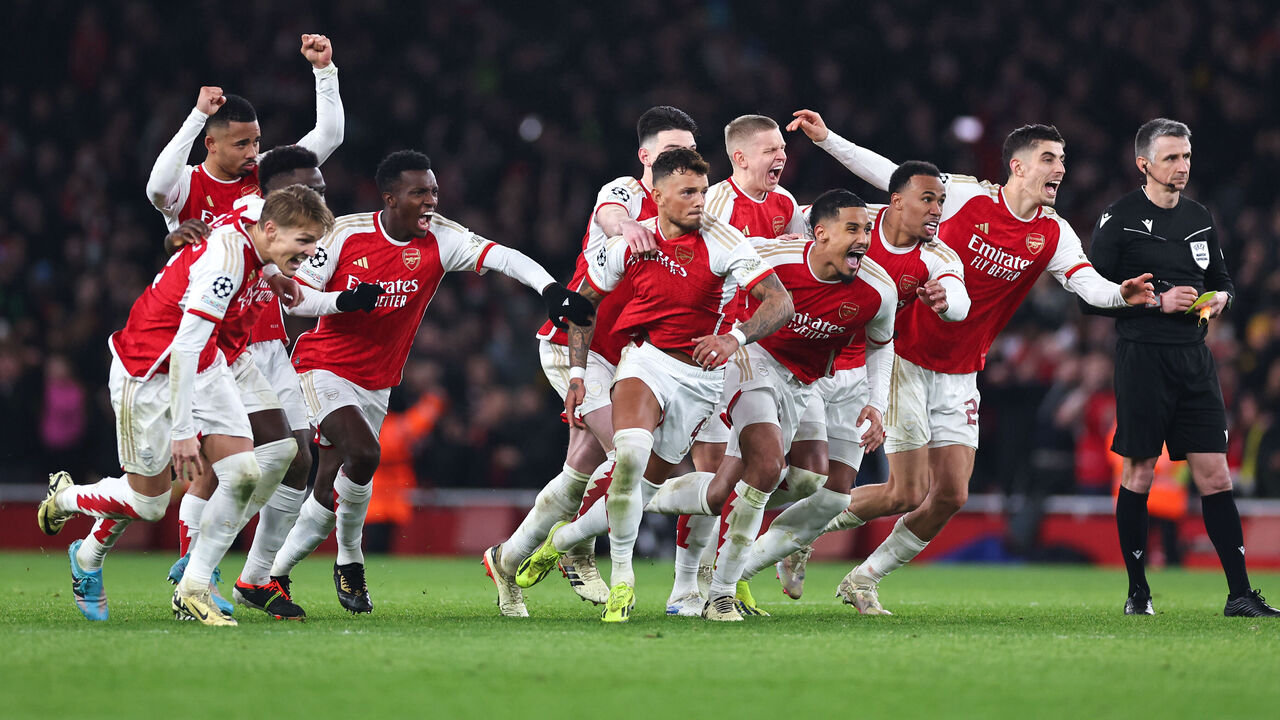
Balancing the mental and physical demands of domestic play with continental competition is a huge piece of this puzzle for all three teams. Midweek success can further galvanize a group, but taxing failures can cripple a team’s momentum at home.
Much like the domestic schedule, Liverpool seem to have an edge here. Arsenal and Manchester City will face European behemoths Bayern Munich and Real Madrid in a pair of mouthwatering Champions League quarterfinal ties beginning next month. However, Liverpool have a comparatively charitable Europa League encounter with Atalanta.
If they both advance, Arsenal and City will meet in the Champions League semifinals, an outcome that will surely be celebrated wildly on Merseyside.
How those games intermingle with the league schedule also matters. Liverpool play Crystal Palace and Fulham following their two matchups with the Italian outfit. After locking horns with Bayern, Arsenal have to contend with Aston Villa and Wolves. Manchester City, still active on three fronts as they seek a second consecutive treble, host lowly Luton after the first leg of their Real Madrid rematch and take on Chelsea in the FA Cup semifinals following the second leg.
Injury concerns

Liverpool have been plagued by injuries all season. Mohamed Salah, Trent Alexander-Arnold, Darwin Nunez, Diogo Jota, and Andy Robertson, among others, have missed varying amounts of time, though the bulk of that group is getting back to full fitness. Alisson Becker remains sidelined and might not return until mid-April. Defensive stalwart Virgil van Dijk is the only Liverpool player to garner over 2,000 league minutes this season, indicating how disruptive injuries have been for Klopp’s team. And yet, they persevere.
Five Manchester City players have cleared the 2,000-minute mark thus far, and a couple more are on the cusp. But the club was without De Bruyne for the entire first half of the season, while trips to the treatment room ravaged Jack Grealish’s year. City also got hit the hardest by the recent international break, with John Stones and Kyle Walker hurt on England duty and racing against time to recover for Sunday’s match versus Arsenal. Swiss defender Manuel Akanji is in the same boat, and Ederson’s return date from a thigh injury remains uncertain. Never shy about tweaking his lineup, Guardiola could be forced to tinker yet again.
Arsenal have been largely unscathed, with six players eclipsing 2,000 league minutes. William Saliba, whose absence last season played an outsize role in Arsenal’s capitulation, has been on the pitch for every second of league play in 2023-24. Gabriel Jesus has battled ailments all year, and Jurrien Timber suffered an ACL injury just 49 minutes into his Premier League debut in the season opener. But the Gunners will be hoping their relative good fortune on the injury front extends right through May, especially as it relates to Bukayo Saka, who pulled out of the England squad to nurse a minor muscular issue.
Prediction
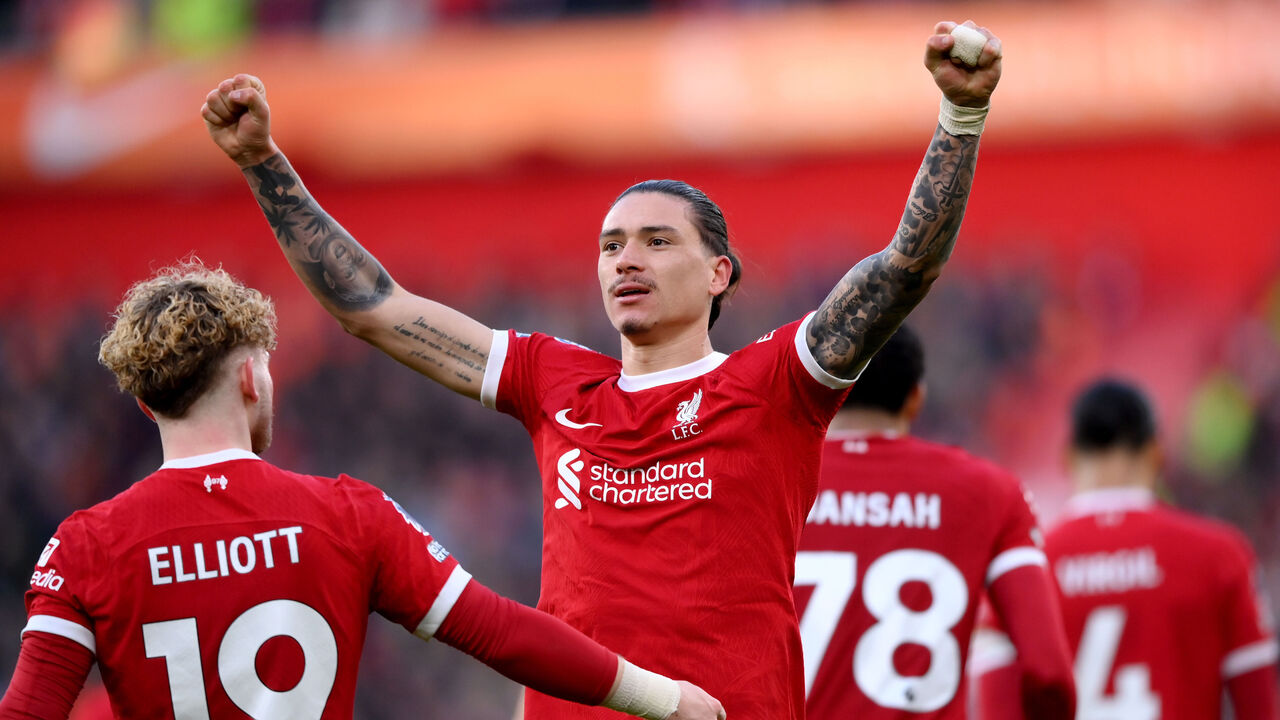
First, a disclaimer: Luck will play a pivotal role in determining which team is crowned on May 19. Injuries will continue to be a factor. There will almost certainly be contentious refereeing and VAR decisions that favor and oppose the title challengers. There will also be finishing variance, with players missing seemingly easy chances and converting more difficult opportunities.
Impossible to predict? No matter. We’re not going to let that stop us.
Considering their advantageous schedule, at home and in Europe, along with their improving squad health at just the right time and the inescapable feeling that this is a team of destiny determined to send their beloved manager out on a high, we’re going with Liverpool, who’ll collect 88 points to pip their rivals and again interrupt Manchester City’s run of domestic dominance.
Copyright © 2024 Score Media Ventures Inc. All rights reserved. Certain content reproduced under license.
Premier League
Euro 2024 playoffs: Miraculous Ukraine comeback, big result for Wales
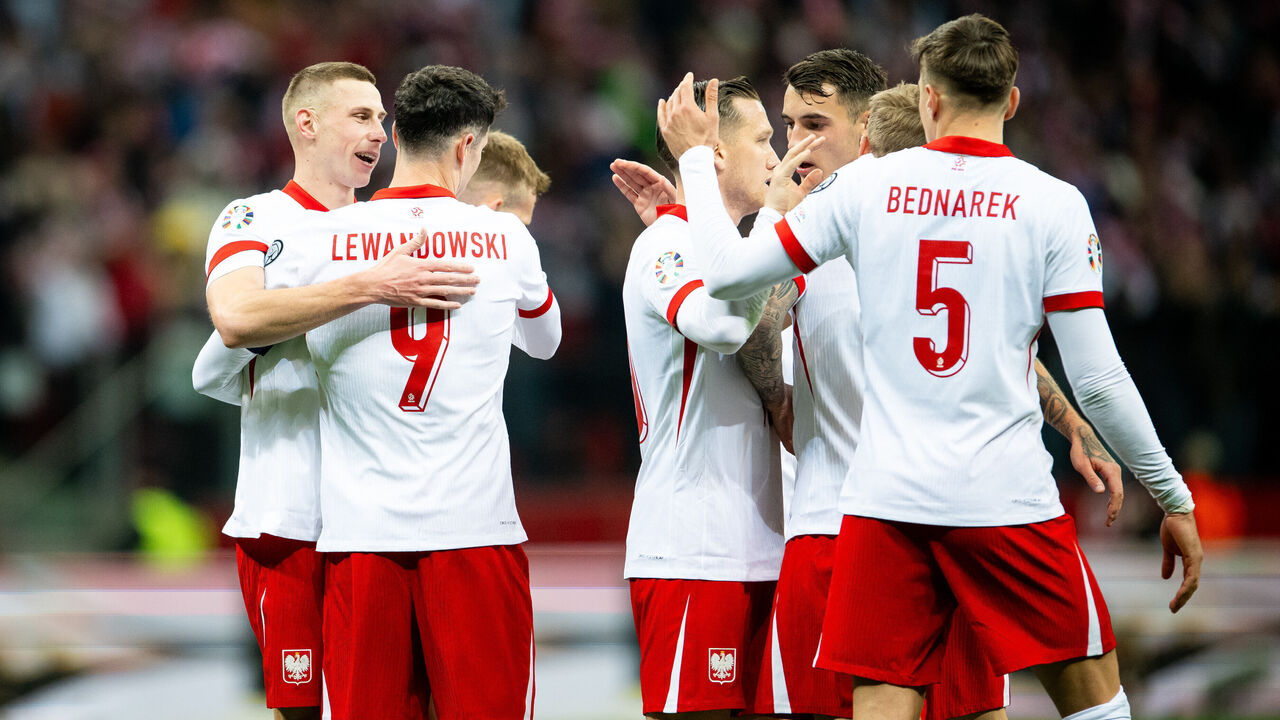
Find the biggest stories from across the soccer world by visiting our Top Soccer News section and subscribing to push notifications.
Wales, Greece, and Poland registered statement wins Thursday, joining three other teams in next Tuesday’s playoff finals for the three remaining places at Euro 2024.
Ukraine staged an incredible late comeback against Bosnia and Herzegovina in its semifinal to keep its Euro dream alive.
The highest-placed team in FIFA’s rankings that’s no longer in contention to reach the tournament in Germany is 60th-placed Finland.
Here’s how the playoff semifinals across Path A, B, and C played out.
Path A

Poland 5-1 Estonia
Estonia barely stood a chance. Down to 10 men as early as the 27th minute, the northern Europeans could only muster a consolation goal in a 5-1 loss to Poland. The Polish achieved the rout without Robert Lewandowski getting on the scoresheet and remain unbeaten in 21 Euro qualifiers at home, a magnificent run dating back to September 2006. Poland is trying to make up for a poor qualifying campaign in which it finished third in Group E, four points behind the Czech Republic and Albania. The country hasn’t missed the Euros since 2004.
Wales 4-1 Finland
The Red Wall might descend on Germany this summer. Wales’ raucous supporters have legitimate hopes of traveling to another major tournament after the Dragons scorched Finland without the retired Gareth Bale and with Aaron Ramsey, 33, on the bench after more injury problems. Teemu Pukki gave the visiting team some hope just before halftime following well-taken finishes from David Brooks and Neco Williams. But Wales needed just 73 seconds of the second period to restore its two-goal cushion via Brennan Johnson’s tap-in. Daniel James took advantage of a defensive error before rounding the goalkeeper in the 86th minute to give the host a resounding victory.
Playoff final: Wales vs. Poland, Tuesday 3:45 p.m. ET
Path B

Israel 1-4 Iceland
Iceland’s Albert Gudmundsson stole the show with an emphatic hat-trick against Israel on Thursday. His stunning free-kick into the top right corner canceled out Eran Zahavi’s opening goal for Israel, and he created a nice cushion for his country with a pair of markers in the final 10 minutes. Just before that, Zahavi blew an incredible opportunity to equalize the match at 2-2, missing a penalty awarded for handball against Iceland’s Gudmundur Thorarinsson. A red card to Israel’s Haim Revivo didn’t help the trailing side. Iceland is now a game away from making only its second-ever appearance at the Euros following its quarterfinal run in 2016.
Bosnia and Herzegovina 1-2 Ukraine
Ukraine scored twice with just minutes remaining in regulation to snatch what seemed to be a sure victory from Bosnia and Herzegovina on Thursday. Bosnia controlled play for most of the match and took the lead in the 56th minute when Mykola Matviyenko turned in Amar Dedic’s shot into his own net. But a colossal defensive lapse cost the Bosnians a chance to make it a record four countries from the former Yugoslavia at Euro 2024. Roman Yaremchuk came off the bench to equalize in the 85th minute and teed up Artem Dovbyk’s sensational winning header three minutes later to turn the playoff semifinal on its head. Ukraine now faces Iceland with a third consecutive Euro appearance at stake.
Playoff final: Ukraine vs. Iceland, Tuesday 3:45 p.m. ET
Path C

Georgia 2-0 Luxembourg
Two clever finishes from Budu Zivzivadze in Tbilisi assured Georgia of a place in Path C’s final – and all without the help of suspended talisman Khvicha Kvaratskhelia. But it wasn’t that simple for the host. Luxembourg thought it equalized during the second half, only for the goal to be eventually snatched away due to Maxime Chanot’s apparent foul 45 seconds earlier. Luxembourg’s Chanot was controversially sent off for denying a clear goal-scoring opportunity, and Zivzivadze effectively ended the match six minutes later with his second strike. Kvaratskhelia is available for the final.
Greece 5-0 Kazakhstan
Anastasios Bakasetas lashed home a penalty, Dimitrios Pelkas headed into the net’s roof, Fotis Ioannidis tapped in from close range, and Dimitrios Kourbelis added another header. And that was all before halftime. Kazakhstan’s impressive 2022-23 Nations League campaign and notable Euro 2024 qualifying wins over Denmark, Northern Ireland (twice), and Finland suddenly seemed ages ago, as Greece recorded its biggest halftime lead since October 1978 (5-0 against Finland). Aleksandr Marochkin’s embarrassing own goal in the 85th minute made Kazakhstan’s day even worse.
Playoff final: Georgia vs. Greece, Tuesday 1:00 p.m. ET
Copyright © 2024 Score Media Ventures Inc. All rights reserved. Certain content reproduced under license.
Premier League
Look: Nike unveils beautiful kit selection for Euro 2024, Copa America
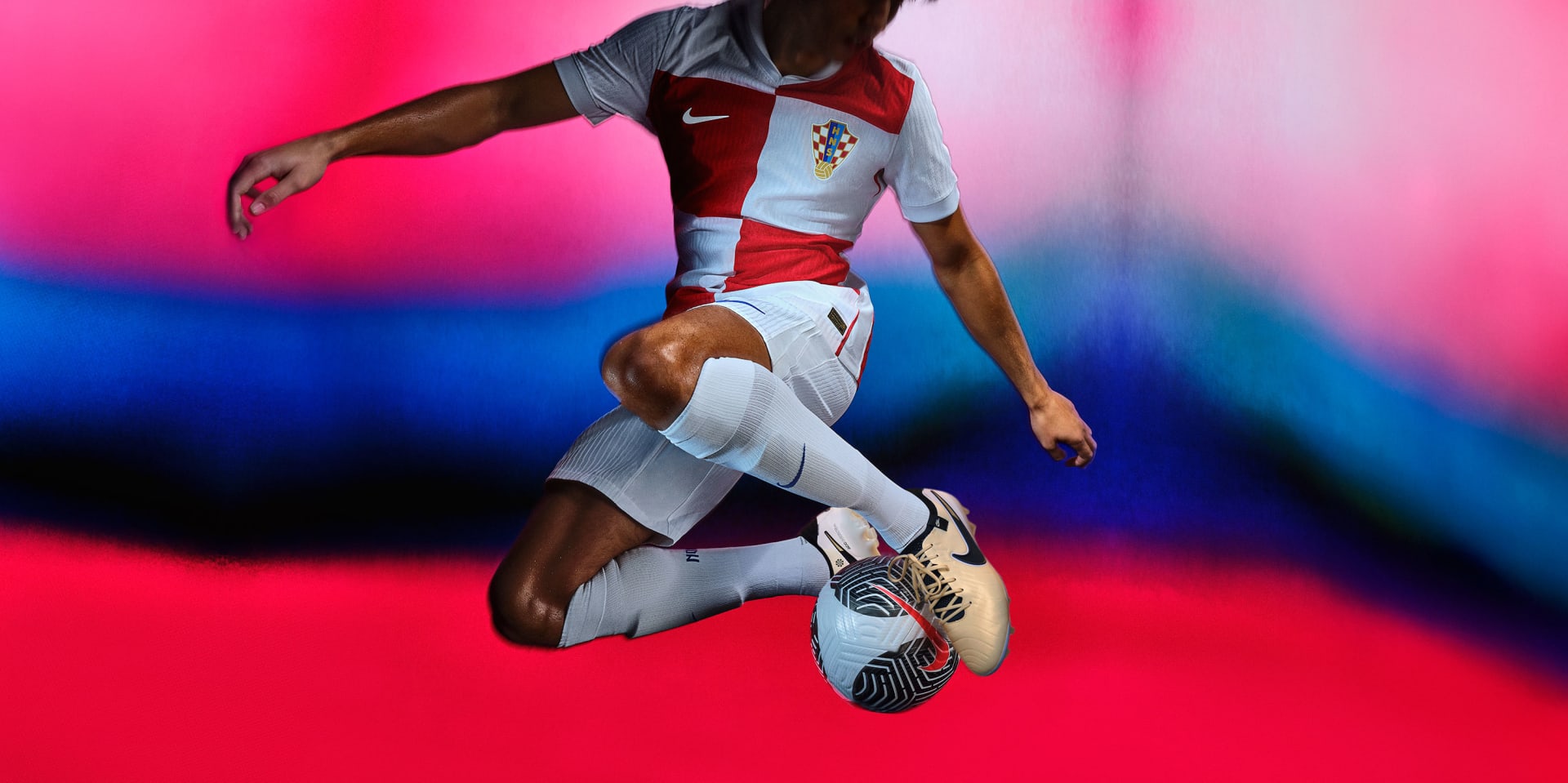
Find the biggest stories from across the soccer world by visiting our Top Soccer News section and subscribing to push notifications.
Nike released a stunning batch of threads ahead of Euro 2024 and Copa America on Monday.
Days after Adidas launched its lineup for the summer’s top two tournaments, Nike followed suit with an array of colorful designs.
The U.S. manufacturer also announced redesigns for Canada and Poland, even though they’ve yet to qualify for their respective tournaments. The Canucks face Trinidad and Tobago in a one-off Copa America qualifier on Saturday, while Poland must navigate a four-team playoff to reach Euro 2024.
(All images courtesy of Nike)
Euro 2024
Croatia
Home
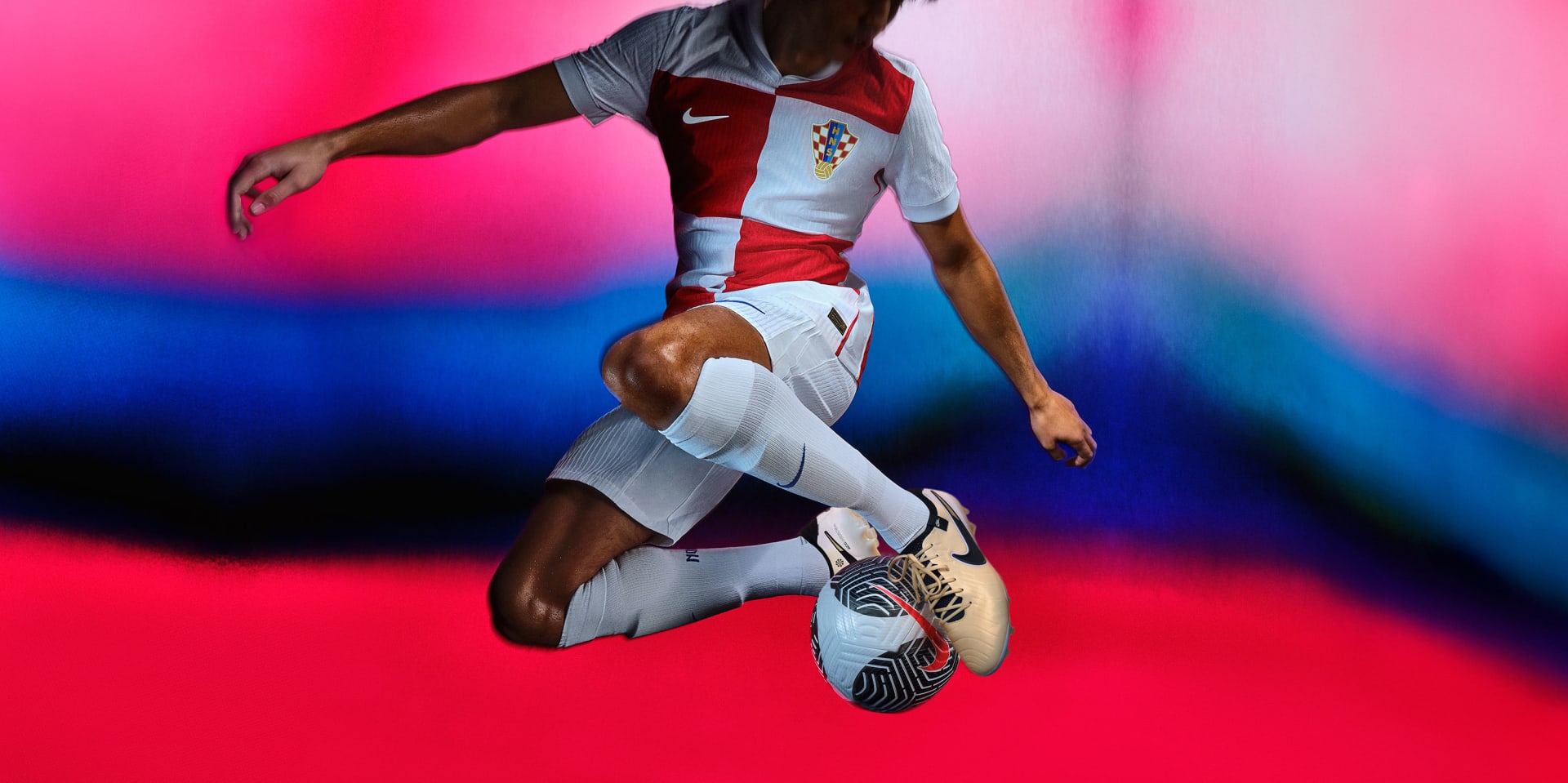
The square-shaped design that gives Croatia its unique look gets a slight upgrade. The home shirt features larger squares than ever before.
Away

Croatia’s away shirt plays on the national flag, with the traditional checkered pattern now on a slant.
England
Home

Influenced by England’s 1966 training gear, the home shirt has a classic feel with a rich blue collar and gorgeous trim along the cuffs.
Away
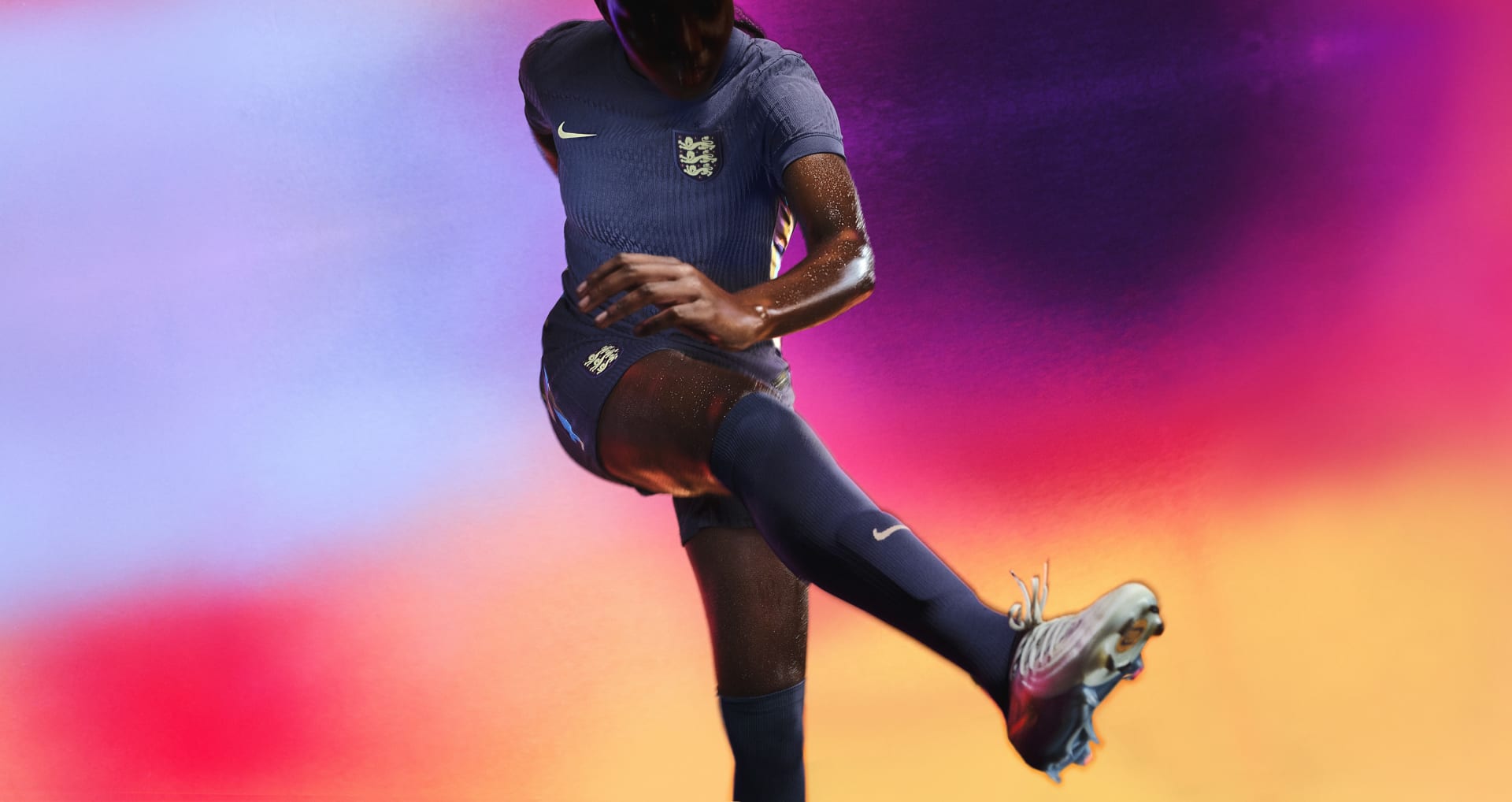
England embraces a deep purple hue for its away selection. The crest stands out with a contrasting off-white tint that makes the three lions pop.
France
Home

France’s home shirt may have the biggest crest of all of Nike’s offerings. The oversized rooster defines this shirt as much as the royal blue that’s made France’s kits a crowd-pleaser.
Away

The pinstripes mirror the colors of France’s national flag and span the width of the shirt in a simple, yet elegant design.
Netherlands
Home
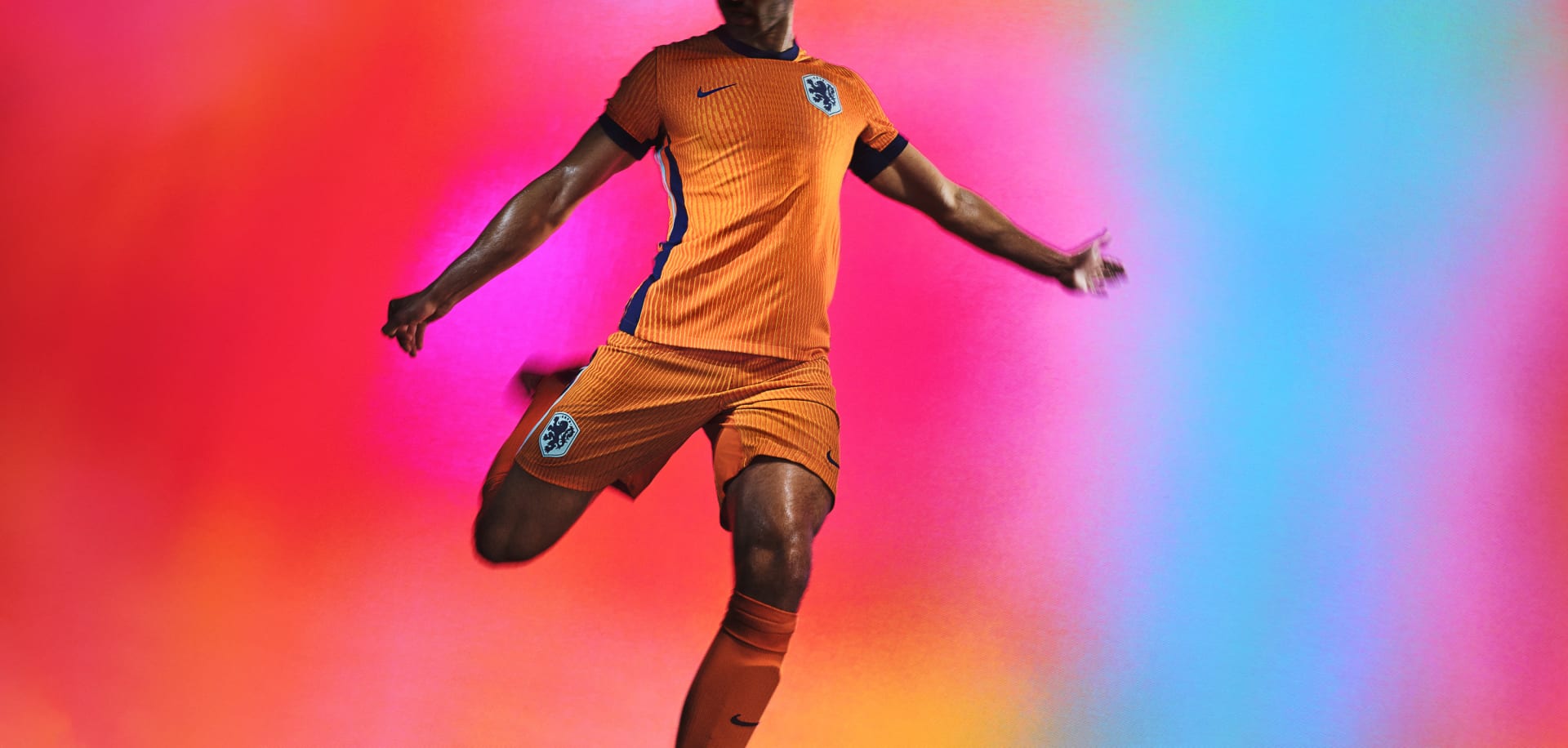
Nike could’ve offered anything orange here, and it would’ve been perfect. But the Netherlands has something bolder and better to wear. The zig-zag pattern adds edge.
Away

The orange collar and cuffs pop alongside the three shades of blue Nike has chosen to create the abstract design on this work of art.
Poland
Home

Poland dedicates premium real estate on the country’s home shirt to its imposing crest.
Away

Poland’s away shirt is a daring choice. The graphic treatment adds texture, giving it a rugged feel while separating from the red tones of years past.
Portugal
Home

With possibly the best home shirt in Nike’s collection, Portugal leans heavily into its traditional red-and-green motif with a polo collar and thick cuffs. The logo sits prominently as well. A smash hit.
Away

Here’s another winner. Portugal’s away strip has a stunning textile imprint that gives off a cool summer vibe.
Turkey
Home
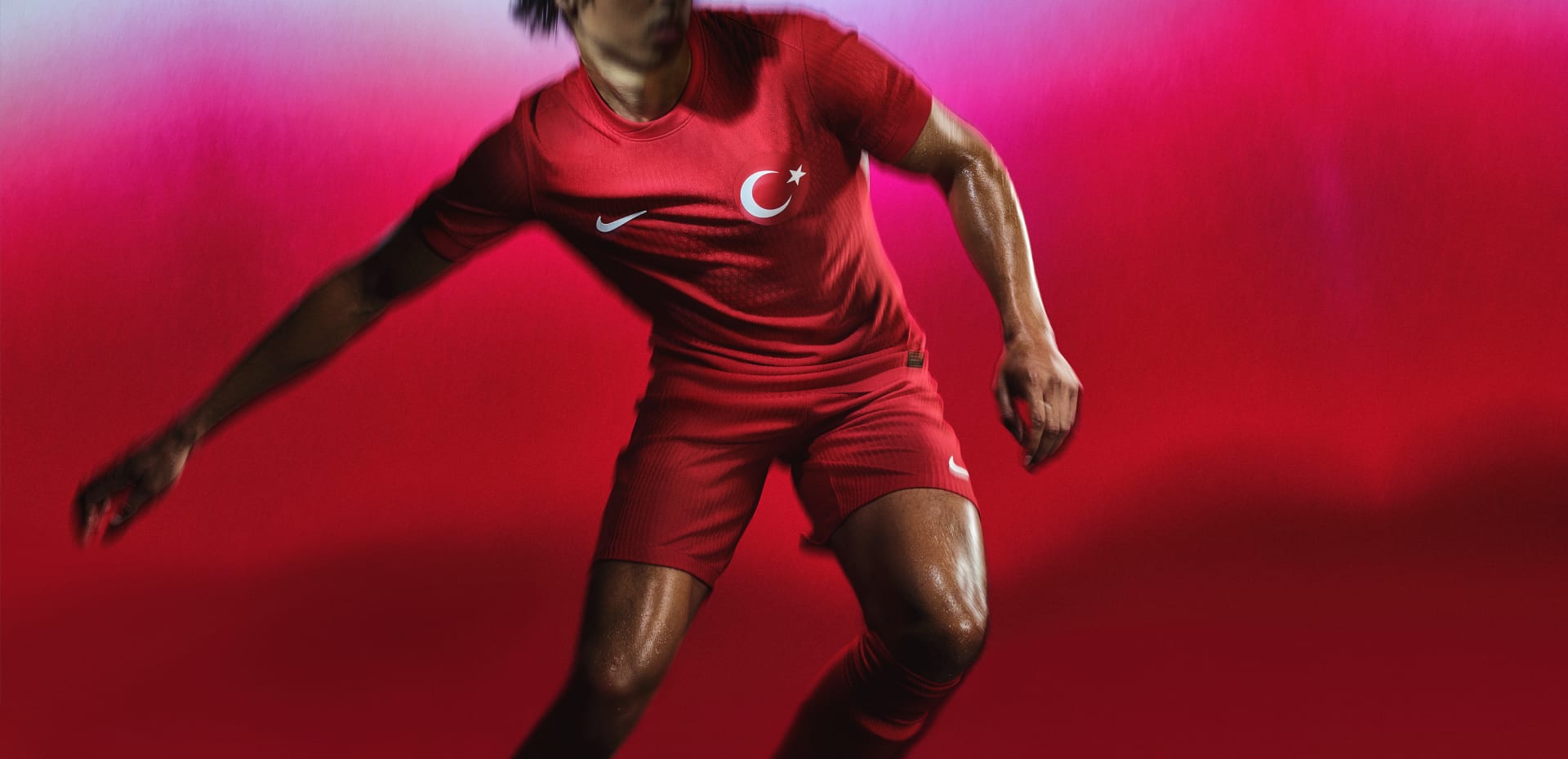
This is a menacing look. Turkey will look like a whirring red army with these imposing shirts.
Away

The classic red band returns to Turkey’s away uniform. Like the others, it features an oversized crest in the middle of the shirt.
Copa America
Brazil
Home

Nike goes big with Brazil’s crest and adds an intricate design to the same yellow hue the Selecao have used for decades.
Away

Brazil’s secondary strip feels like the beach. A horizontal wavy pattern covering the entire shirt mimics the country’s picturesque coastline.
Canada
Home

The only blemish in Nike’s lineup. Why is there a circle around the swoosh? And why are the shoulders so much darker than the body? None of it makes sense.
Away

The 13 pinstripes are supposed to represent the 10 provinces and three territories that make up Canada. Unfortunately, the rest of the shirt looks incomplete.
United States
Home

The United States men’s national team gets a classic home shirt with patriotic detailing along the color and sleeves.
Away

The gradient works perfectly with the red shorts the U.S. will wear at the Copa America.
Copyright © 2024 Score Media Ventures Inc. All rights reserved. Certain content reproduced under license.

Breaking down thrilling EPL title race with 10 games left

Euro 2024 playoffs: Miraculous Ukraine comeback, big result for Wales

Managerial merry-go-round: Predicting hires for marquee jobs

The Champions League's best XI so far

35 stars who will define the summer transfer window

Ajax show Juventus that winning requires more than individual quality
Trending
-
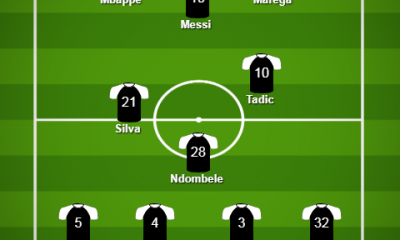
 Champions League5 years ago
Champions League5 years agoThe Champions League's best XI so far
-
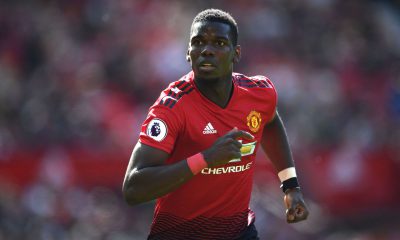
 Serie A5 years ago
Serie A5 years ago35 stars who will define the summer transfer window
-

 Serie A5 years ago
Serie A5 years agoAjax show Juventus that winning requires more than individual quality
-

 Uncategorized3 years ago
Uncategorized3 years agoIFFHS publishes the list of top scorers in football history – Romario first, Ronaldo third
-
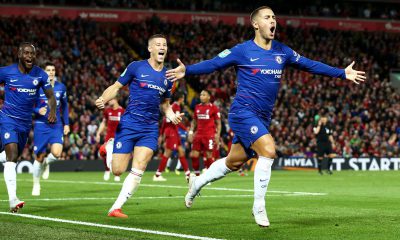
 Premier League5 years ago
Premier League5 years agoTransfer grades: Assessing Hazard’s move to Real Madrid
-

 Sports5 years ago
Sports5 years agoReady Newest Trainer in Bundesliga History, retire SOLSKYER.
-

 Sports5 years ago
Sports5 years agoWenger: Hazard can’t replace Ronaldo.
-

 Sports5 years ago
Sports5 years agoMastur Talent Returns: In Milan I was a chance to make money, penalized me for growing up as a footballer.

